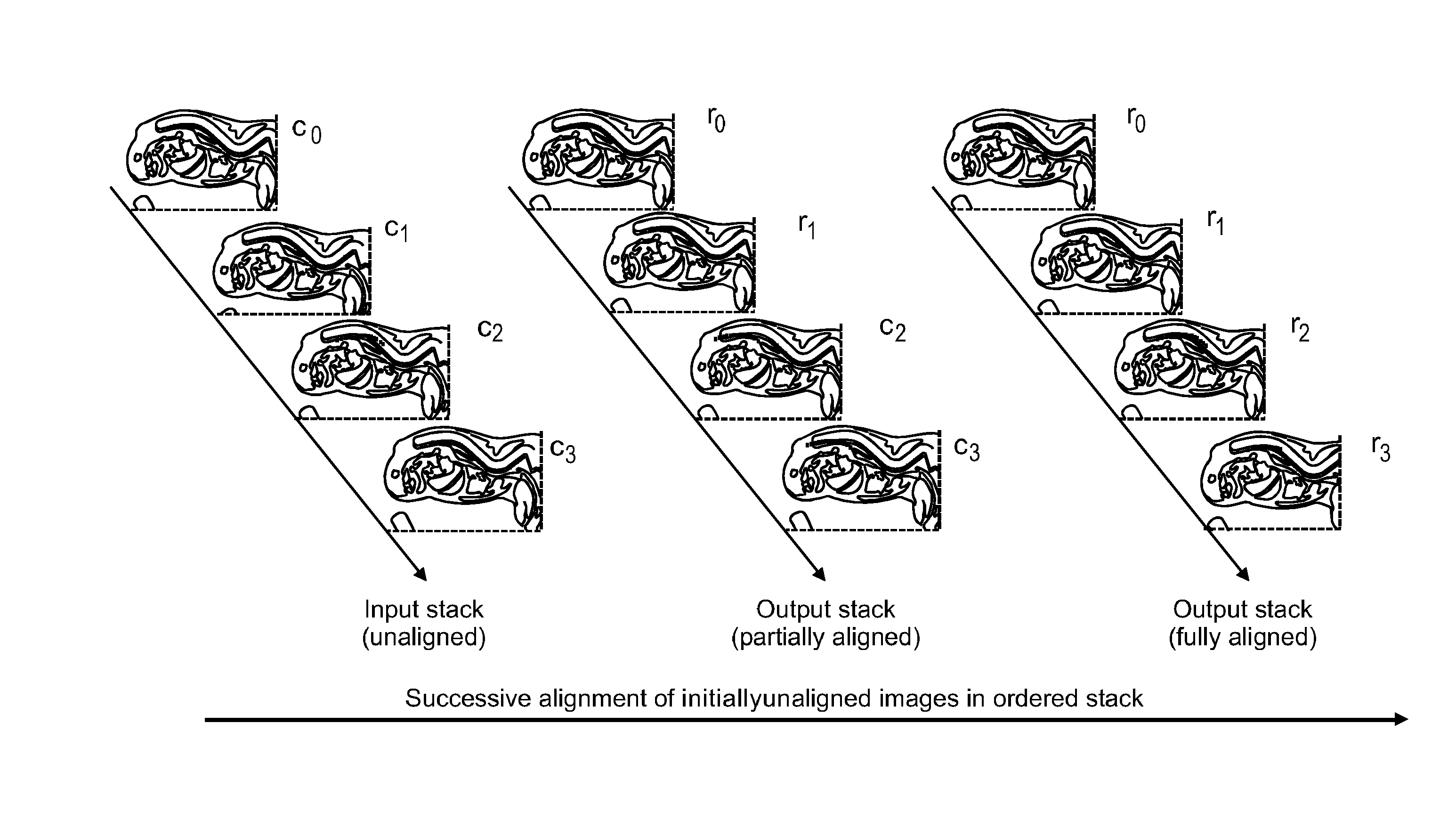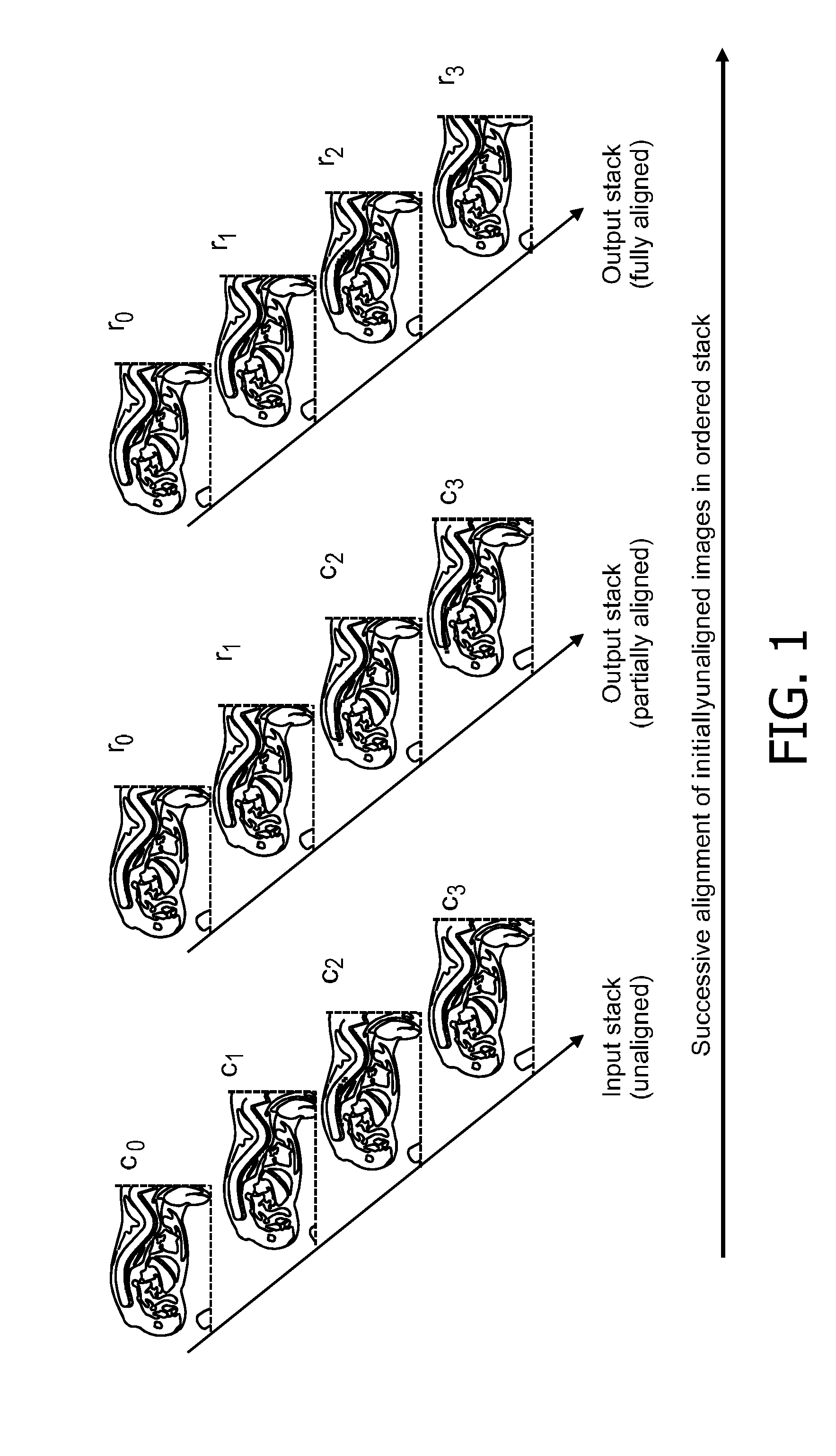Alignment of an ordered stack of images from a specimen
a technology of ordered stacks and specimens, applied in image analysis, image enhancement, instruments, etc., can solve the problems of critical computational requirements for automated alignment, difficult to align every image of sliced specimens robustly, etc., to reduce the computational burden, reduce the sensitivity of aligning, and increase the robustness of alignment
- Summary
- Abstract
- Description
- Claims
- Application Information
AI Technical Summary
Benefits of technology
Problems solved by technology
Method used
Image
Examples
Embodiment Construction
[0034]In the following embodiments of the present invention will be explained in further detail in combination with the accompanying drawings.
[0035]FIG. 1 illustrates a process of successively aligning an ordered stack of images from a specimen (which is e.g. a sliced specimen). As shown in FIG. 1, prior to the alignment of the ordered stack of images, the stack is considered to be fully unaligned and comprises four unaligned images c0, c1, c2, and c3. By successively or recursively aligning the images in the stack which are still unaligned based on already aligned images, as e.g. shown in the middle of FIG. 1 which shows already aligned images r0 and r1 and images still to be aligned c2 and c3, the ordered stack of images can be fully aligned so that all initially unaligned images c0, c1, c2, and c3 are transformed into aligned images r0, r1, r2, and r3. In the following, the notation used for FIG. 1 will be used throughout the remaining description: unaligned images will be denote...
PUM
 Login to View More
Login to View More Abstract
Description
Claims
Application Information
 Login to View More
Login to View More - R&D
- Intellectual Property
- Life Sciences
- Materials
- Tech Scout
- Unparalleled Data Quality
- Higher Quality Content
- 60% Fewer Hallucinations
Browse by: Latest US Patents, China's latest patents, Technical Efficacy Thesaurus, Application Domain, Technology Topic, Popular Technical Reports.
© 2025 PatSnap. All rights reserved.Legal|Privacy policy|Modern Slavery Act Transparency Statement|Sitemap|About US| Contact US: help@patsnap.com



